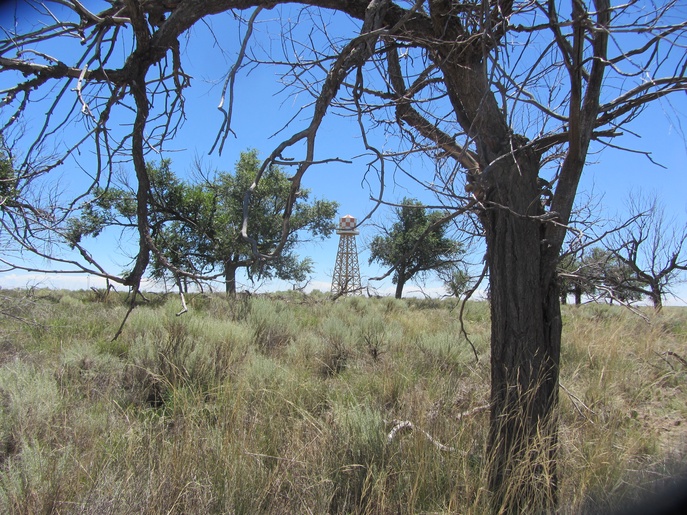
|
||
 Enlarge
Enlarge
|
Licensing | |
Remembering Amache Rattlesnakes by Minoru Tonai
Background: John Hopper was describing some of the maintenance work hazards around Amache and Frances Palmer asked AHS II if we had any stories about snakes.
Yes, there were many rattlesnakes in Amache, but most were in the sage brushes. When we arrived in Amache, it was getting cool, so there were not many rattlesnakes around the barracks. Don’t forget, the land where the camp was built was scraped clean of vegetation, so it would be easy to build the barracks and buildings. However, in the first spring (1943), when the weather started warming up, apparently, a rattlesnake had laid eggs in our Ladies Latrine, so they hatched. 9L was the only block that stuck-out and surrounded by sage brush on three sides. It scared the ladies, so some men went into the Ladies Latrine and killed the snakes and made sure there were no others. We never had that problem again.
In 9L, there was a young Kibei man, who found that rattlesnake venom was needed by hospitals, so he caught rattlesnakes, with a stick, to milk them of their venom to sell. In addition, he would use their skins to sell as coverings for hat and belt bands. He also sold the snake flesh for sukiyaki, and said it was an aphrodisiac. Don’t know if it was effective, but I guess he was able to sell some. When he caught several snakes in the hot summer, he would ask us teenagers to use a long stick to keep them in the sun, until they fainted from the heat (they are cold-blooded, so their blood would “boil”, if exposed to high heat). Amache reached 110 degrees every summer, when we were there. Then, he could milk them of their venom, safely, because he did not have the potential of being bitten. Previously, he had been bitten three times, but other than a very swollen hand, he got to the hospital quick enough that it only swelled with a purple color. His name was Kashumi Nakashima.
Many young people, teenagers and above, would go hunting for rattlesnakes for fun and skin them for their skin. You just need to not confront them from the front, because they would strike. If you approached them from the rear, they would run away. My 57-year-old father, who was deaf, would hunt and capture them, until my mother barred him from keep it in a cage in front of our room. So, he gave them to Mr. Nakashima. My father enjoyed hunting for them in the sagebrush. Don’t forget, by 1944, the MP’s did not care, if we propped open the barbed-wire fences with sticks and walked into the sage brush. Some Issei men, like my father, liked to collect desert plants to place in front of their room, and some male teenagers, like myself, liked the freedom of getting outside of the barbed-wire fence. We did wear high-top boots. We even did it in the winter, so we could play in the snow. The rattlesnakes were hibernating, then. By the end of camp, the MP’s did not man the Guard Towers. They knew that we were not a threat to anyone and if we met them, they were not unfriendly or were even friendly. They were probably bored to death with their duty.
 mhomma
—
Last modified Aug 20 2017 1:44 p.m.
mhomma
—
Last modified Aug 20 2017 1:44 p.m.
Part of these albums

|
Amache Stories and Memories mhomma
mhomma
|

|




 Amache Stories and Memories
Amache Stories and Memories The Schmoe House, Houses for Hiroshima Project, Grand Opening Ceremony - Hiroshima, Japan
The Schmoe House, Houses for Hiroshima Project, Grand Opening Ceremony - Hiroshima, Japan May 2011 Japan Tsunami Relief Mission trip & Follow up visit in Oct 2012
May 2011 Japan Tsunami Relief Mission trip & Follow up visit in Oct 2012 Baptist Churches in Pre-WWII Imperial Japan
Baptist Churches in Pre-WWII Imperial Japan Moneta / Gardena Valley Baptist Church (1930-1940)
Moneta / Gardena Valley Baptist Church (1930-1940) Heart Mountain Photos from Michihiko Wada
Heart Mountain Photos from Michihiko Wada Incarceration Years: Lordsburg/Santa Fe, Seagoville, Amache Camp Photos and DOJ Documents
Incarceration Years: Lordsburg/Santa Fe, Seagoville, Amache Camp Photos and DOJ Documents
 Journal feed
Journal feed
